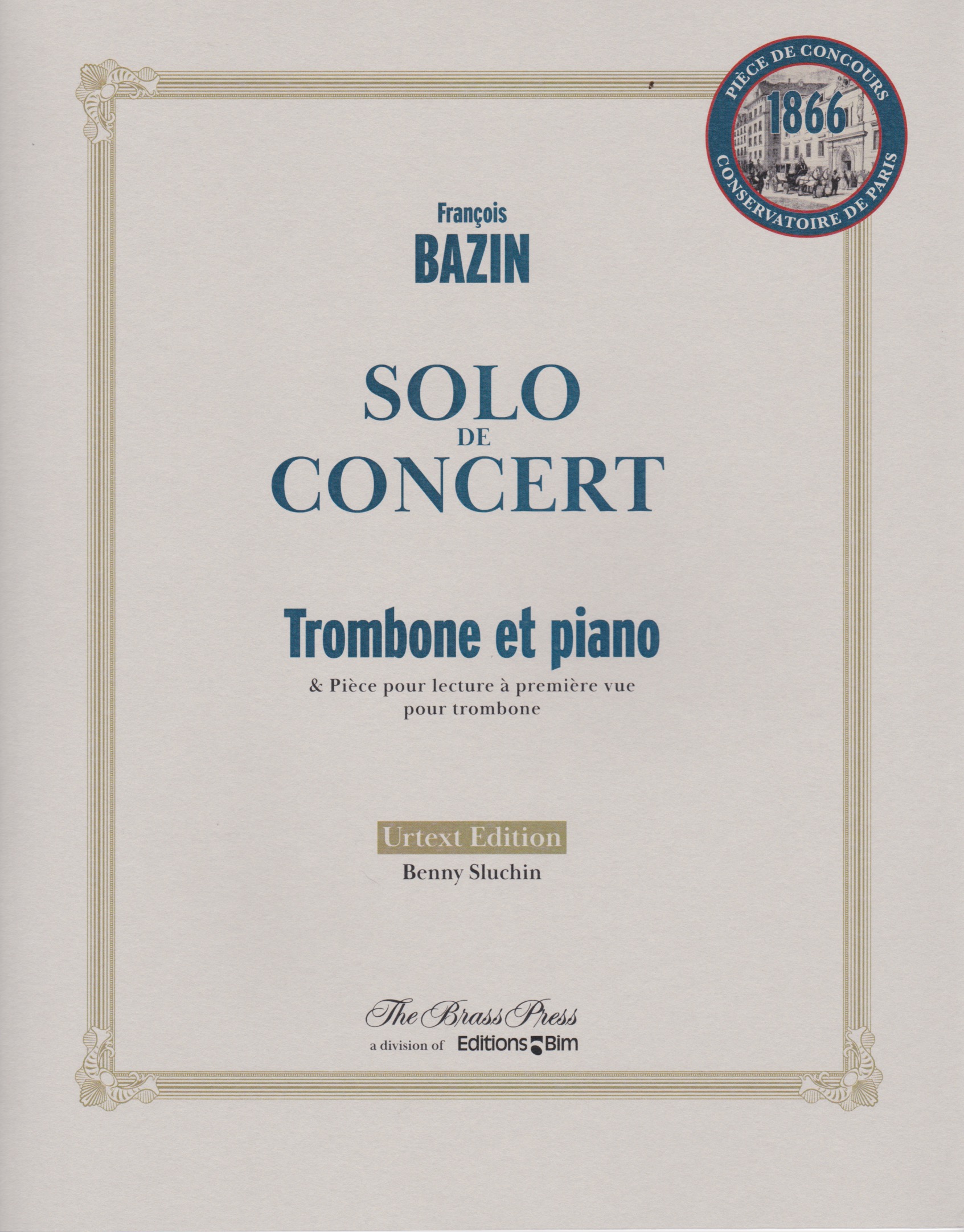François Bazin
 Solo de Concert:
Solo de Concert:
Arranged by Benny Sluchin
Trombone and string quintet or piano
Sion, , Switzerland
Publisher: Editions Bim
Date of Publication: 2020
URL: http://www.editions-bim.com
String score, piano reduction solo score.
Primary Genre: Solo Tenor Trombone - with piano
Secondary Genre: Solo Tenor Trombone - with other instruments
 Solo de Concert:
Solo de Concert: Arranged by Benny Sluchin
Trombone and string quintet or piano
Sion, , Switzerland
Publisher: Editions Bim
Date of Publication: 2020
URL: http://www.editions-bim.com
String score, piano reduction solo score.
Primary Genre: Solo Tenor Trombone - with piano
Secondary Genre: Solo Tenor Trombone - with other instruments
François Bazin (1816-1878) was a distinguished graduate of the Paris Conservatoire, having won first prizes in harmony, counterpoint, fugue, and organ. Upon graduation in 1840 he won the highest and most prestigious composition award, the Prix de Rome. He composed numerous light operas for the Opera-Comique that were popular during his lifetime. But time has not been good to his music, as it is rarely performed today. He was also a teacher of harmony at the Conservatoire. The Premier Solo was written for a valve trombone with six piston valves, an instrument in use by military bands and a separate area of study at the Conservatoire. It was the competition work for 1866. The internationally celebrated trombonist Benny Sluchin, who prepared the urtext edition of this work, as well the piano reduction, also wrote an informative article that is included in the Bim Edition: The Solo de Concert is an unusual work, written for the six-valve trombone with an accompaniment of a string quintet (2 violins, viola, cello and double bass). It is rare to find a competition piece with an accompaniment other than piano. It was composed for the class of valve trombone held by Antoine Dieppo (1857–1870). The Andantino in D minor shows the lyrical, cantabile side of the trombone. A short cadenza leads back to the first theme. Then follows an Allegro moderato in D major showing the military side of the instrument. A second cadenza gives the trombone freedom of expression, before the martial theme leads to the coda. Editions Bim offers two versions: the original with string quintet and a piano reduction. The work can also be played with string orchestra. The rules at the Paris Conservatory provided that, beside the competition piece, the candidates had another required work, shorter, and to be sightread. Generally, the composer of the competition piece also wrote the latter. This is not the case of François Bazin, who composed this short piece for the Competition of 1873. During the first period of the 19th century, the accompaniment of the sight-reading piece was mostly entrusted to the cello. Later on, the piano gradually took over, depending on the instruments; for the trombone since 1872. The musical style is one that you might find in an aria from an operetta from the mid nineteenth century. Although composed for a valved instrument, it fits perfectly for the trombone. The spotlight is on the soloist with the accompanying music, strings or piano, saying little on their own. Also included in this edition is the required sight-reading piece from the 1873 competition. The layout, paper quality, and printing are first class in every way.
Reviewer: Karl Hinterbichler
Review Published June 24, 2023
Review Published June 24, 2023